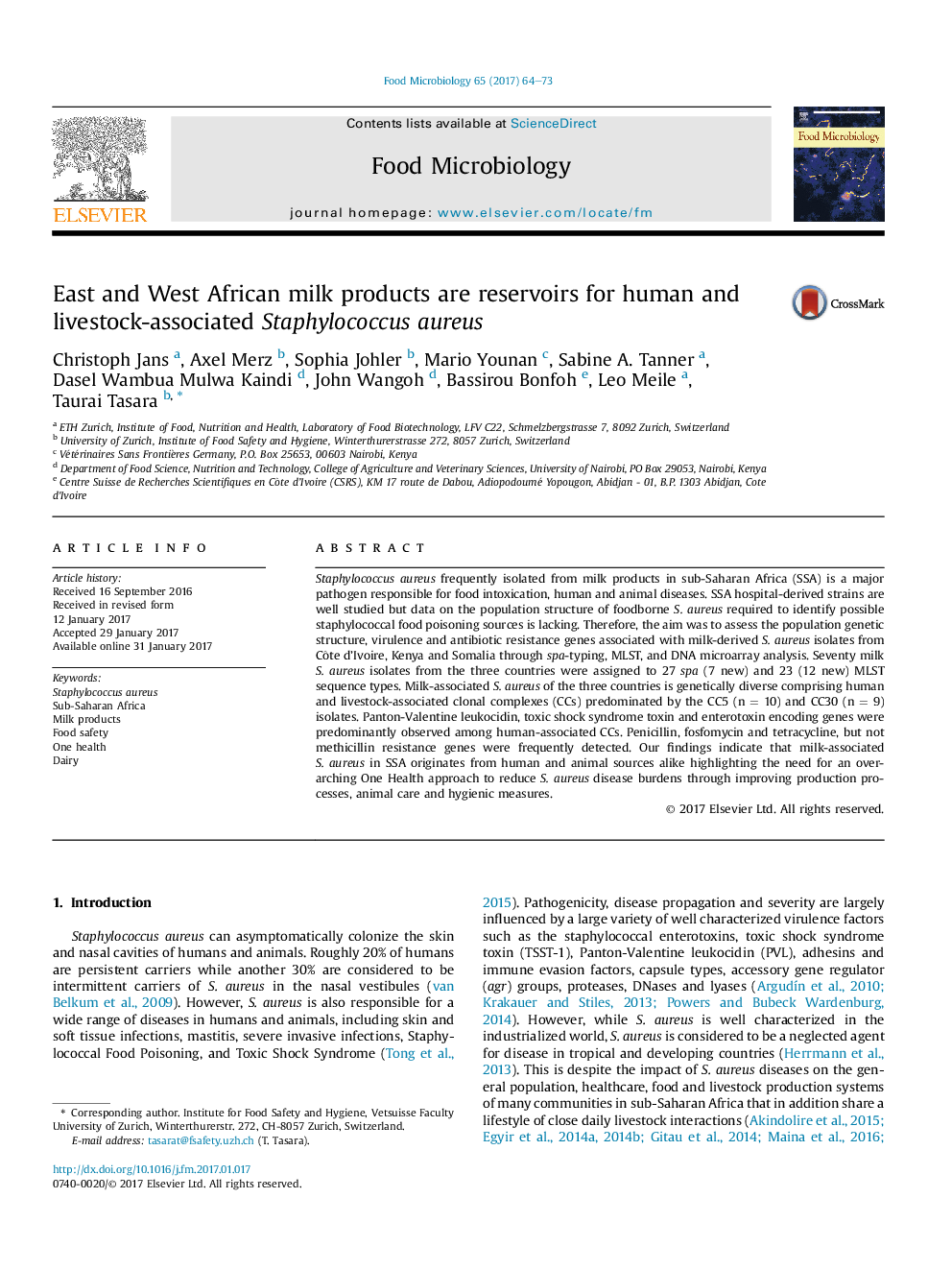| کد مقاله | کد نشریه | سال انتشار | مقاله انگلیسی | نسخه تمام متن |
|---|---|---|---|---|
| 5740130 | 1616236 | 2017 | 10 صفحه PDF | دانلود رایگان |
- 70 milk-associated S. aureus isolates from East and West Africa were analysed.
- East and West African milk-associated S. aureus isolates are genetically diverse.
- Both human and livestock-associated S. aureus lineages contaminate milk.
- High prevalence of multi drug resistant S. aureus but no MRSA.
- Isolates harbour virulence genes encoding for PVL, TSST-1 and enterotoxins.
Staphylococcus aureus frequently isolated from milk products in sub-Saharan Africa (SSA) is a major pathogen responsible for food intoxication, human and animal diseases. SSA hospital-derived strains are well studied but data on the population structure of foodborne S. aureus required to identify possible staphylococcal food poisoning sources is lacking. Therefore, the aim was to assess the population genetic structure, virulence and antibiotic resistance genes associated with milk-derived S. aureus isolates from Côte d'Ivoire, Kenya and Somalia through spa-typing, MLST, and DNA microarray analysis. Seventy milk S. aureus isolates from the three countries were assigned to 27 spa (7 new) and 23 (12 new) MLST sequence types. Milk-associated S. aureus of the three countries is genetically diverse comprising human and livestock-associated clonal complexes (CCs) predominated by the CC5 (n = 10) and CC30 (n = 9) isolates. Panton-Valentine leukocidin, toxic shock syndrome toxin and enterotoxin encoding genes were predominantly observed among human-associated CCs. Penicillin, fosfomycin and tetracycline, but not methicillin resistance genes were frequently detected. Our findings indicate that milk-associated S. aureus in SSA originates from human and animal sources alike highlighting the need for an overarching One Health approach to reduce S. aureus disease burdens through improving production processes, animal care and hygienic measures.
Journal: Food Microbiology - Volume 65, August 2017, Pages 64-73
